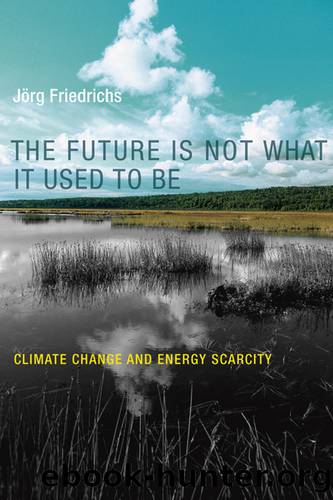The Future Is Not What It Used to Be by Friedrichs Jörg;

Author:Friedrichs, Jörg; [Friedrichs, Jörg]
Language: eng
Format: epub
ISBN: 3339655
Publisher: MIT Press
Published: 2013-08-15T00:00:00+00:00
Figure 5.2
Post-normal and abnormal science
The intense polarization inherent in this gambit brings forth a situation where post-normal science receives support from progressive interests pleased by the reformist policy agenda, while conservative interests provide support to disgruntled former normal scientists who fiercely denounce the âunscientificâ muddling of research with political commitment.
Take for example the issue of genetically modified maize (De Marchi and Ravetz 1999). Over the 1990s, establishment science was fiercely irritated by the mobilization against âgene maize.â Normal scientists felt under significant pressure to extend the peer community and allow motivated outsiders to participate in the scientific debate. In Europe the result has been the cooptation of these outsiders into post-normal science. In the United States and most other parts of the world the pressure was resisted, with the result that normal science continues to be haunted by the same critical voices as before.
Even in âpost-normalâ Europe, there were radical critics of genetically modified organisms (GMOs) who did not want to get themselves coopted by the new mainstream. Post-normal science has not dissuaded such radical alarmists from opposing, on principle, any form of gene manipulation, including what is deemed reasonable by mainstream scientists. On the opposite end of the political spectrum, alienated former establishment figures have retooled as contrarian scientists contesting the new post-normal science.
As the example shows, abnormal science does not cease after the cooptation of outsiders. No matter how many former critics are coopted, there always remains a âlunatic fringeâ of radical alarmists opposing science no matter what accommodation has been reached by the extended peer community. At the same time, the cooptation of outsiders typically leads to strong resentment among previous insiders opposing the post-normal policy agenda.
This is exactly what can be seen in the case of climate change, where science became post-normal early on. And yet this has not led to the disappearance of abnormal science. Radical alarmists denounce the âclimate consensusâ as lackadaisical, while contrarian scientists posture as climate skeptics blowing the whistle against the same consensus for being unduly alarmist.
The energy case is remarkably different. Like climate change, energy scarcity is easily identified as a post-normal problem. And yet, post-normal science has come to dominate only climate science, not the study of energy. In the energy case, there is a longstanding pattern of normal science challenged by abnormal science but refusing to become post-normal. The result has been an entrenchment of normal science and a radicalization of abnormal science.
To sum up: In a post-normal situation, when science is challenged by dissident outsiders, it sometimes becomes post-normal and sometimes resists. In some cases, such as climate change, post-normal situations lead to the cooptation of moderate outsiders into the mainstream, spawning post-normal science. In other cases, such as energy, normal science becomes entrenched. Either way, radical challengers persist. As long as post-normal problems remain politically salient, the nuisance posed by abnormal science never disappears.
Let us now apply this framework to the specific knowledge regimes and patterns of contestation found in energy studies and climate science.
Download
This site does not store any files on its server. We only index and link to content provided by other sites. Please contact the content providers to delete copyright contents if any and email us, we'll remove relevant links or contents immediately.
The Secret History by Donna Tartt(18851)
The Social Justice Warrior Handbook by Lisa De Pasquale(12143)
Thirteen Reasons Why by Jay Asher(8799)
This Is How You Lose Her by Junot Diaz(6796)
Weapons of Math Destruction by Cathy O'Neil(6148)
Zero to One by Peter Thiel(5689)
Beartown by Fredrik Backman(5600)
The Myth of the Strong Leader by Archie Brown(5427)
The Fire Next Time by James Baldwin(5250)
How Democracies Die by Steven Levitsky & Daniel Ziblatt(5129)
Promise Me, Dad by Joe Biden(5088)
Stone's Rules by Roger Stone(5027)
A Higher Loyalty: Truth, Lies, and Leadership by James Comey(4846)
100 Deadly Skills by Clint Emerson(4840)
Rise and Kill First by Ronen Bergman(4705)
Secrecy World by Jake Bernstein(4648)
The David Icke Guide to the Global Conspiracy (and how to end it) by David Icke(4628)
The Farm by Tom Rob Smith(4439)
The Doomsday Machine by Daniel Ellsberg(4417)
